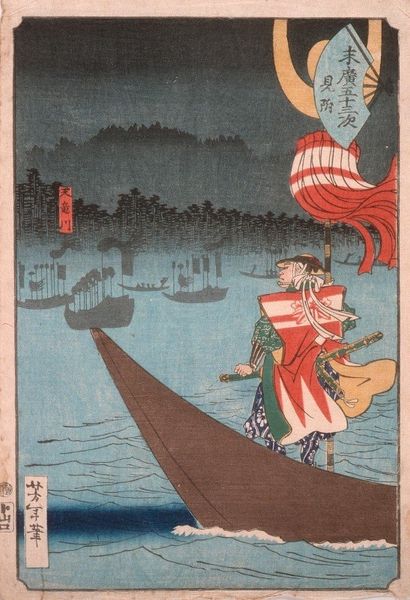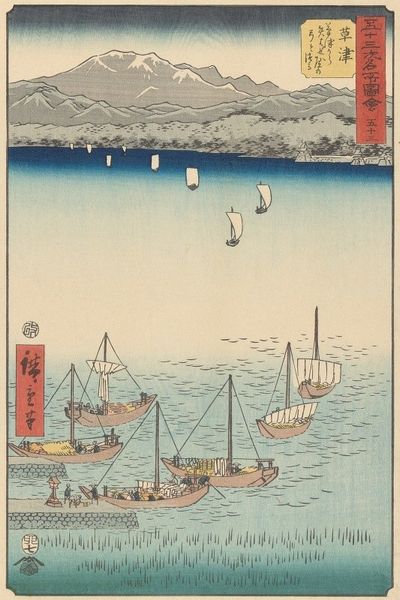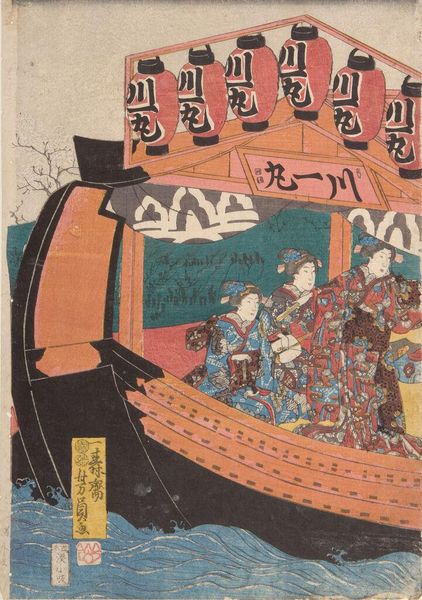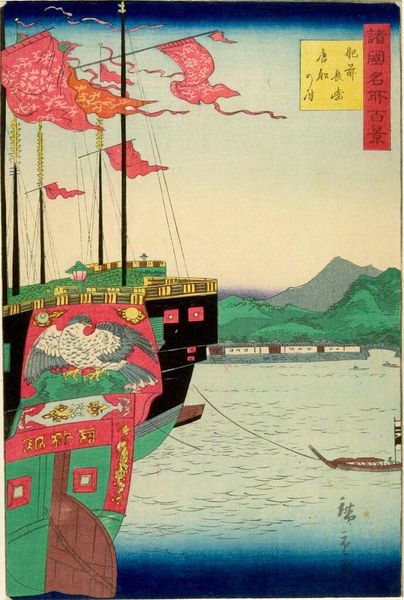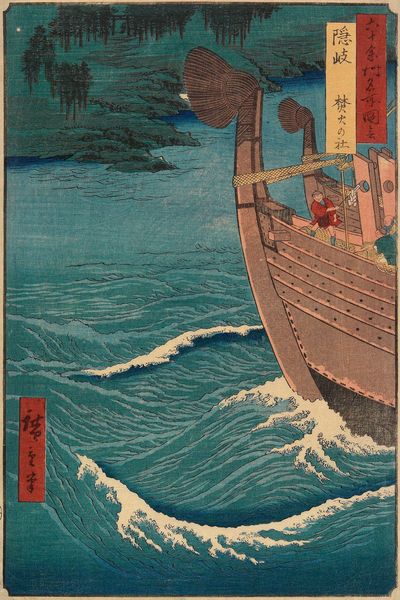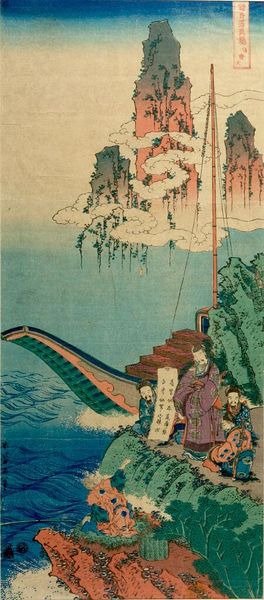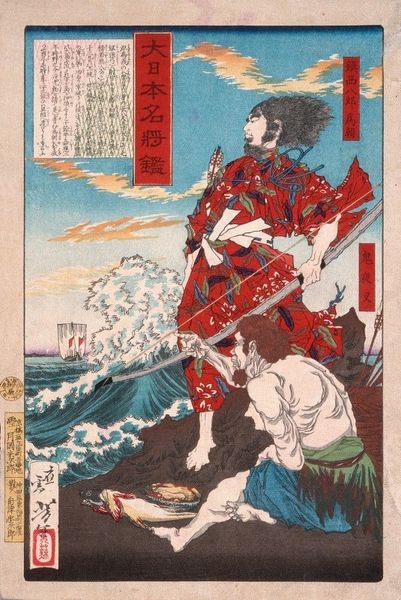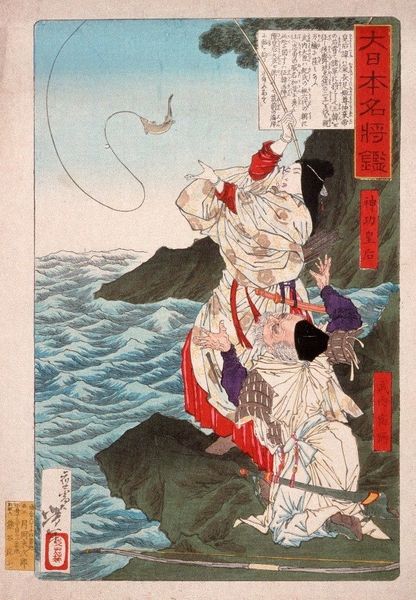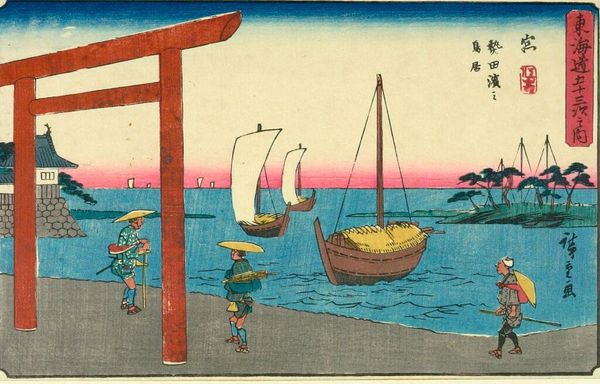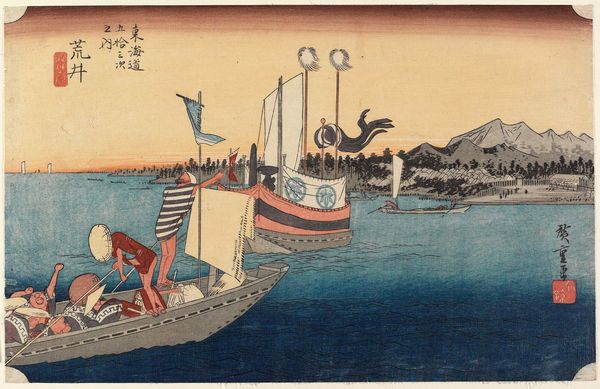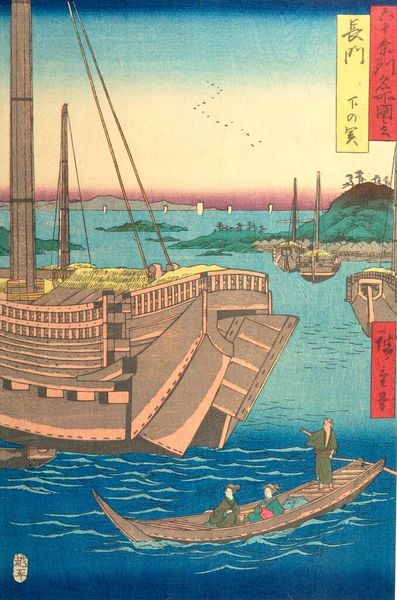
print, woodblock-print
# print
#
asian-art
#
landscape
#
ukiyo-e
#
woodblock-print
Copyright: Public Domain: Artvee
Editor: This is "Maisaka" a woodblock print from 1863 by Tsukioka Yoshitoshi. I'm struck by the perspective, like we're seeing this grand, ornamented boat from a low vantage point, almost bobbing in the water ourselves. What does this scene evoke for you? Curator: What immediately stands out to me is the potent blend of artistic representation and the socio-political environment of the late Edo period. The depiction of this vessel – presumably carrying dignitaries or members of the ruling class – sails into an evolving socio-political landscape that informed Yoshitoshi’s vision. What could the public perception have been, viewing the privileged on such a gaudy ship when the country was on the brink of the Meiji Restoration? Editor: That's a good point, especially since ukiyo-e were popular amongst the merchant class. How might they have received such an image of wealth and power? Curator: Precisely! Consider the history of woodblock prints. Originally supported by and depicting the elite, by this time the art form had broadened, resonating with a wider, more common audience. So how might their gaze be critical? Think about who controlled access to imagery then; publishers and patrons likely sought to maintain a positive image. Editor: So the artist had to balance their creative vision with the need to appease powerful patrons and an increasingly discerning public. Curator: Exactly! And what about the deliberate composition, placing the vessel somewhat off-center and incorporating landscape, challenging formal traditions of the time and signaling evolving social structures? It also raises a compelling query regarding the power and purpose of visual representation. It invites reflection on the symbiotic dynamics between art, authority, and the viewing public. What do you make of this new perspective? Editor: It paints a much richer narrative than I initially saw – it makes me consider how an artist navigates and responds to their world through their work. Curator: Indeed, appreciating art involves more than aesthetic judgment. We learn about history, culture, and social dynamics which give art so much of its potency.
Comments
No comments
Be the first to comment and join the conversation on the ultimate creative platform.
